12 Great Films by Older Filmmakers
“I just don’t want to be an old-man filmmaker.”
These words were spoken by Quentin Tarantino during a recent interview. “I want to stop at a certain point. Directors don’t get better as they get older. Usually the worst films in their filmography are those last four at the end…When directors get out-of-date, it’s not pretty.”
Tarantino’s remarks were made not long before his 50th birthday (which has since passed), and they raise an interesting question: can filmmakers stay fresh in their old age, or are they doomed to irrelevancy – awkward, dull, forgettable or just downright embarrassing films? While this unfortunately happens time and time again, a surprising number of directors have made extremely interesting work while in their 60s, 70s or even 80s.
With Woody Allen’s latest, Blue Jasmine, opening to rave reviews, here are 12 films that prove the spark is not always lost during a filmmaker’s twilight years.
12. Killer Joe (2011)
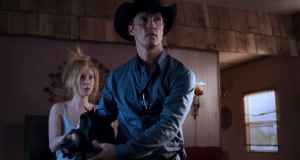 Director: William Friedkin
Director: William Friedkin
Age: 76
One of the great filmmakers of the American New Hollywood, William Friedkin stunned audiences with tense, superbly crafted films like The French Connection and The Exorcist that explored the dark side of human nature. However, as the years went on, Friedkin made forgettable flop after forgettable flop, his films being poorly reviewed again and again. That is, until 2006’s Bug, an adaptation of the Tracy Letts play. Stripped-down, intense, over-the-top and gruesome,the film reinvigorated him.
Knowing he was onto something, Friedkin’s next was another collaboration with kindred spirit Letts, an adaptation of the play Killer Joe, about a Texas family hiring a contract killer as part of a harebrained scheme to collect insurance money. While Killer Joe never reaches the stunning heights of something like The Exorcist, it is brimming with energy, personality, very dark humor, terrific performances (Matthew McConaughey wows as the title character) and an unforgettable sequence involving fast food. Most importantly of all, it never feels like an old man is behind the camera, but it’s clear that whoever is is having a lot of fun.
11. You Ain’t Seen Nothin’ Yet! (2012)
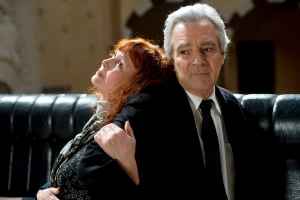 Director: Alain Resnais
Director: Alain Resnais
Age: 89
The oldest filmmaker on this list, Alain Resnais is known for French New Wave classics like Hiroshima Mon Amour and Last Year at Marienbad – quiet, beautiful and mysterious films that blended fantasy and reality, truth and illusion. His most recent film, You Ain’t Seen Nothin’ Yet!, is a fitting note to end on if it becomes his last (which, considering his age, health and the subject matter of the film, seems rather likely).You Ain’t Seen Nothin’ Yet! takes place shortly after the death of a playwright. Per his wishes, a group of actors gather at his estate, the common thread being their participation in various productions of his play based on the myth of Eurydice. They end up acting out scenes from the play, which take on a life of their own. Blurring the lines between art and life, Resnais seems to be looking back on both his own life and his own career, and any knowledge of his age and work adds to the poignancy of his latest strange beast of a film – a story of a master showman’s final hurrah that is, in reality, most likely a master showman’s final hurrah.
10. The Discreet Charm of the Bourgeoisie (1972)
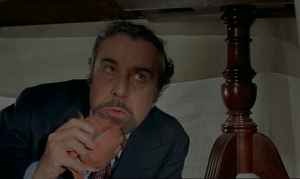 Director: Luis Buñuel
Director: Luis Buñuel
Age: 72
Known for his surreal attacks on the decadence of the upper class (a fancily-dressed couple at an outdoor party are reduced to slobbering sex fiends in 1930’s L’age d’Or), Spanish-born filmmaker Luis Buñuel lost none of his bite as he entered old age. The Discreet Charm of the Bourgeoisie, the middle part of a loose trilogy along with The Milky Way and The Phantom of Liberty, and probably the most remembered of the three, concerns a group of wealthy dinner guests whose meal is constantly interrupted by strange episodes – love affairs, gun violence, an incredible meta moment I dare not give away here.
Buñuel once said he wanted to make a disaster movie where none of the characters change, and while this classic doesn’t quite fit into that genre, the same principle applies. Like 1962’s The Exterminating Angel, the ruling class does not budge in their decadence and self-absorption as Buñuel throws various forces their way with a playful, anything-can-happen feverish abandon not entirely dissimilar to the likes of British comedy troupe Monty Python.
9. Short Cuts (1993)
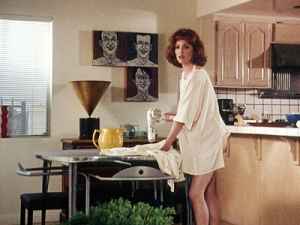 Director: Robert Altman
Director: Robert Altman
Age: 68
In the 1970s, with films like M*A*S*H and Nashville, Robert Altman brought together diverse casts to create rich ensembles of diverse characters. Two decades later, he gave us possibly his most eclectic ensemble of all – 22 primary players including a makeup artist, a group of old men who find a dead body while fishing, and a phone sex worker who speaks filth into the mouthpiece while sitting at the table with her children, Altman brings together a varied cast, from young stars such as Robert Downey, Jr. to Hollywood veteran Jack Lemmon, to musicians Tom Waits and Huey Lewis. Julianne Moore steals the show late in the film with an impassioned speech to her husband that’s also one of cinema’s most memorable nude scenes. Altman’s naturalistic, observational style wonderfully suits the various plot threads, based on the short stories of Raymond Carver. With the film’s three-hour run-time, Altman is no rush, and lets the audience sit back and absorb the characters and their intersections. Think Paul Thomas Anderson’s Magnolia minus the operatic style.
8. Hugo (2011)
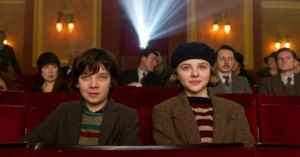 Director: Martin Scorsese
Director: Martin Scorsese
Age: 68
While Scorsese is most associated with very adult tales of crime, violence and masculinity – Taxi Driver, Raging Bull, Goodfellas, and others – he has demonstrated his versatility again and again, from the female-led road film Alice Doesn’t Live Here Anymore to the off-kilter late-night comedy After Hours. Even though there is a distinct idea of what defines a “Martin Scorsese Picture,” he’s defied being pigeonholed by mixing it up time and time again. And in his old age, he shows us that he’s still full of surprises.
Filled with warmth and magic, Hugo is a family-friendly Scorsese film (yes, such a thing exists). Hugo Cabret, an orphan who lives in a large clock overhanging Paris’ Gare Montparnasse railway station, befriends the adventurous niece of a local toymaker and the two set off to unravel the mystery of an automaton (mechanical man) that Hugo has been repairing. The film becomes a gorgeous love letter to cinema from one of its biggest fans and contributors, and features stunning 3D which James Cameron called the best use of the medium so far (including his own works). Hugo sucks the viewer into its stunning, immersive world and sends him or her off with a smile on his or her face (and Howard Shore’s score isn’t half bad either).
7. Before the Devil Knows You’re Dead (2007)
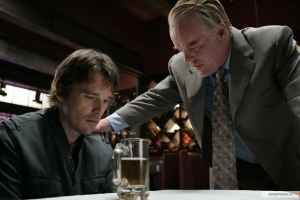 Director: Sidney Lumet
Director: Sidney Lumet
Age: 83
50 years after his theatrical debut 12 Angry Men, Sidney Lumet gave the world his swan song, and like that classic – and many other films from a long and prolific career – it was a gripping meditation on crime and morality. Philip Seymour Hoffman and Ethan Hawke star as two cash-strapped brothers who decide to rob their parents’ jewelry store. This isn’t the only betrayal in the family – Ethan Hawke’s character has been sleeping with his brother’s wife. Before the Devil Knows You’re Dead is the classic story of people making bad decisions and suffering the consequences, but it’s by no means generic, with an unusual fractured narrative structure and powerful performances (the camera holds on Hawke as he drives away from the robbery as he conveys the intense panic of someone in over his head). Before the Devil Knows You’re Dead combines the passion of a young filmmaker with the expertise of an experienced master – Lumet is known for the thoughtful precision of his direction in classic films like Dog Day Afternoon, Serpico and Network, and his final work is no exception.
6. Midnight in Paris (2011)
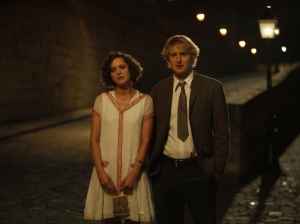 Director: Woody Allen
Director: Woody Allen
Age: 75
Woody Allen began directing features at the tail end of the 1960s and within the next decade hit a stride of a film almost every single year, a stride which has continued to this day. However, with his greatest works behind him – Annie Hall, Manhattan, Crimes and Misdemeanors, etc. – Allen’s more recent output has been viewed as fairly hit-and-miss (although in this viewer’s opinion he’s on more often than he’s off). Midnight in Paris could have been another fairly standard modern-day Woody Allen film, but ended up being a surprise hit that nabbed an Oscar for Best Original Screenplay.
The always likable Owen Wilson stars Gil Pender, one of the best Woody Allen surrogates yet. Gil is a screenwriter vacationing in Paris with his fiancée who finds a car that takes him back in time every night to the 1920s, a decade he’s long romanticized. Woody Allen gets across a great message about idealizing the past while still having lots of fun making Gil interact with his artistic idols such as Ernest Hemingway, F. Scott Fitzgerald and Pablo Picasso, as well as the object of his affection, the fictional Inez, played by Marion Cotillard. Midnight in Paris is romantic, funny, bittersweet, and like fellow 2011 films Hugo and The Artist, has a magic about it reminiscent of Hollywood’s Golden Age (silent era through early 60s), a special feeling far too absent in contemporary cinema. On top of all this, Allen and cinematographer Darius Khondji (Se7en) take full advantage of the gorgeous locale, especially in a wordless opening sequence of various Parisian sights set to the saxophone jazz of Sidney Bechet.
5. The Man Who Shot Liberty Valance (1962)
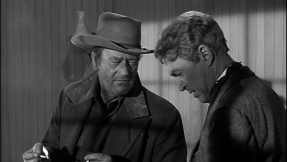 Director: John Ford
Director: John Ford
Age: 65
Leave it to one of the people most responsible for shaping our image of the classic American Western (in films such as Stagecoach) to create one of the most essential deconstructions of its mythology. In fact, the incredibly prolific (and immeasurably influential) John Ford had been subverting the genre for quite some time, criticizing such aspects as gung-ho militarism (Fort Apache) and discrimination against the American Indians (The Searchers), as well as other dark aspects of America in some of his non-westerns, crafting bleak portraits of the Great Depression and World War II in The Grapes of Wrath and They Were Expendable respectively.
The revisionist Western classic The Man Who Shot Liberty Valance goes one step further than exposing certain myths – it tackles the concept of myth-making itself. James Stewart plays Ransom Stoddard, a senator famed for shooting the infamous outlaw Liberty Valance. He returns to the town where it all happened many years ago to attend to the funeral of his old friend Tom Doniphon, played by John Wayne, and recounts the story to some reporters. Liberty Valance examines the way that history can distort and rewrite the truth, and the tricky nature of heroism. As one of the reporters says at the film’s end: “this is the West, sir. When the legend becomes fact, print the legend.” Ford, however, is not content to do so, and shows the audience the truth of the story.
While his incredible skill behind the camera is very much on show, Ford handles the film with restraint, never trying to pretty things up. The black-and-white also goes a long way to de-glamorize the material (although it is speculated that this was for more practical reasons such as budget and to mask the actors’ makeup, the effect is nevertheless there). Liberty Valance is also notable for being the first of only two times that Hollywood legends Stewart and Wayne shared the screen, and their differing personas create a wonderful contrast and a sort of Old West odd couple.
4. Ran (1985)
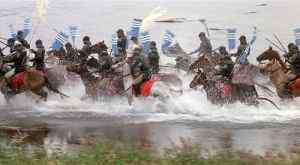 Director: Akira Kurosawa
Director: Akira Kurosawa
Age: 75
Not only is Ran a highly revered film from the last ten years of the great Japanese filmmaker’s career, but there are many who consider it one of his crowning achievements alongside classics like Rashomon and Seven Samurai. Inspired by William Shakespeare’s King Lear, as well as several Japanese legends, Ran is a towering historical epic about Lord Hidetora, a once-powerful ruler who divides his kingdom between his three sons, and the bloody aftermath that ensues.
One of the most visually gifted filmmakers to ever live, Kurosawa continues the bold compositional style and use of color that characterized his previous film, 1980’s Kagemusha, while adding more action and movement (Kagemusha is a more static and subdued film). The beautiful imagery is even more impressive in light of the fact that Kurosawa’s eyesight was weakening at the time of filming. The dialogue-free opening scene depicts Hidetora and his three sons hunting boar ends with the camera zooming in on Hidetora’s face, the bloodlust in his eyes setting the stage for the savagery to come. Kurosawa’s talents also make the castle battle scene one of the most stunning set pieces in his filmography, painting the screen with arrows, flames, smoke and clouds, filling the audience’s ears with the sound of wind and crackling flames.
Kurosawa’s film is one about great forces of human nature, including mankind’s never-ending penchant for bloodshed, destruction and power-grabbing. Never afraid to wear his heart on his sleeve, Kurosawa speaks to the audience through one of the characters who breaks down at the end and begs for the human race to get along. In the case of this kingdom, it’s too late, but Kurosawa hopes that the people of our era still have a chance to make things right.
3. The Tree of Life (2011)
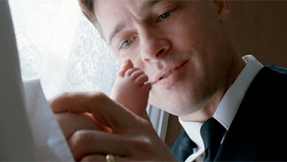 Director: Terrence Malick
Director: Terrence Malick
Age: 67
Terrence Malick has made only a handful of films in a career spanning decades, but has nevertheless managed to make a huge impression with his soulful and poetic style. His convention-defying films are wonderfully organic, with a genuine appreciation for the world, its people, and the emotions stirred by both. After two 1970s classics, Badlands and Days of Heaven, Malick disappeared for twenty years before returning with 1998’s World War II drama The Thin Red Line, and in more recent years has crafted a new and unique cinema language with 2005’s The New World and The Tree of Life (a style some believe he took too far with his latest, To the Wonder). This approach uses unorthodox framing and editing techniques, wide lenses, natural lighting and flowing Steadicam work to immerse the audience in beauty and feeling.
The Tree of Life intercuts between the birth and the universe, a 1950’s family drama, and the present day alienation of one of the family’s children. An incredibly ambitious musing on life, the universe and everything, The Tree of Life shows the way these different stories ripple into one another. While The Tree of Life is mysterious and more concerned with questions than answers, it is an extremely textured, alive and lingering work, and features a vivid portrayal of what it’s like to view the world through a child’s eyes. Malick also places much emphasis on the duality of nature and grace, exemplified by the two parents, the tough and emotionally abusive father (Brad Pitt) and the doting, ethereal mother (Jessica Chastain), and like Kurosawa, Malick urges the audience to go through life choosing gentle love over destructive aggression.Malick’s own choice of earnestness over irony or cynicism is also refreshing in this day and age.
Children of Men Cinematographer Emmanuelle Lubezki and 2001: A Space Odyssey special effects wizard Douglas Trumbull help create some of the most stunning shots ever put on film, which work along with classical music and whispered narration to make an unforgettable cinematic experience that rewards repeat viewings and, while evasive and difficult for many, is, for all the rest, a profound and moving work about what it’s like to live in this universe.
2. Eyes Wide Shut (1999)
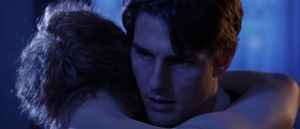 Director: Stanley Kubrick
Director: Stanley Kubrick
Age: 70
Only a tiny handful of filmmakers have the kind of clout Stanley Kubrick does. He made only 13 features from 1953 to 1999, never repeating himself, yet always infusing his stories with the often imitated but never bettered Kubrickian touch – masterful, enigmatic and otherworldly. Classics like Dr. Strangelove, 2001: A Space Odyssey, A Clockwork Orange and The Shining were all far ahead of their times, and have become incredibly iconic (one need only look to the countless Kubrick homages and parodies on The Simpsons). Kubrick’s swan song, Eyes Wide Shut, came out 12 years after his previous film, Full Metal Jacket and four months after the reclusive director’s death. Many critics reviewed it favorably, and while many others viewed it as a misstep, it should be noted that many of his films were poorly received at the time of their release only to be later reevaluated as masterpieces.
The film concerns the marriage of Bill and Alice Harford, played by real-life husband and wife Tom Cruise and Nicole Kidman. After Alice confesses to an affair she’s had, Bill goes out for the night on a strange sexual odyssey that gets him into real trouble. Kubrick has often dealt with the idea that many things hang on a thread, and take a single push to fall apart. A rogue commander puts the world on the brink of nuclear annihilation in Dr. Strangelove. Jack Torrance’s sanity is destroyed by the isolation of the Overlook Hotel in The Shining. In Eyes Wide Shut, Bill’s world is torn apart by jealousy, changing his life forever. The film, like much of his work, is intensely dreamlike (especially the infamous orgy sequence) and the final conversation about dreams and reality could be interpreted as concerning not just to the events of the film, but Kubrick’s entire body of work.
1. Fanny and Alexander (1982)
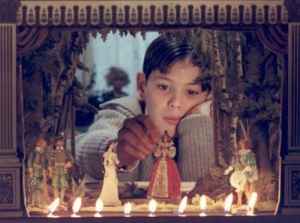 Director: Ingmar Bergman
Director: Ingmar Bergman
Age: 64
At his best (The Seventh Seal, Cries and Whispers, etc.), Ingmar Bergman makes films that seem to have the weight of the world upon them. In his heavy and haunting works, Bergman uses his camera to peer into the eyes of his characters (he was a heavy believer in the close-up) and doesn’t allow his audience to look away. In what he declared to be his final film (although he did made-for-TV work for the next few decades), the Swedish master shows us the life of the titular two children as their well-off existence falls to pieces after the death of their father.
Bergman organically integrates supernatural elements into the film, sometimes comforting, sometimes terrifying. This use of magical realism really puts the viewer in the shoes of the children at the story’s center, but in the film everyone is a child in some sense. Whether this is illustrated comically, such as the children’s uncle farting onto a match, or tragically, in a haunting moment where Fanny and Alexander’s grandmother comforts her son’s ghost, Bergman shows how small we all feel in such an often sad and ever-changing world. But while Bergman is often perceived as a peddler of bleak, humorless foreign art-house cinema, many his films actually contain a good deal of warmth and hope, and despite the hardship he puts the characters of Fanny and Alexander through, the ending scenes of the film offer hope for the future, and, like the end of Eyes Wide Shut, comment on what a strange dream this life is, coming from a man experienced enough to really know.
Honorable Mentions
At 70 Francis Ford Coppola made a fascinating and personal family drama with Tetro. The Ghost Writer, released when director Roman Polanski was 76, is another excellently crafted thriller from one of the genre’s great masters. 69-year-old Howard Hawks’ Western El Dorado isn’t quite as classic as his Rio Bravo, of which it is a loose remake, but it’s not too far off. While criticized for its screenplay (which he did not write), Alien sorta-prequel Prometheus showed that Ridley Scott’s talents for visuals, action and tension had not waned at 74. 70-year-old Michael Haneke’s Amour is an incredibly moving look at a loving marriage colliding with the harsh realities of old age, but wasn’t including in this list because Haneke hasn’t been making films for very long compared to the other directors discussed.
Is there a good film in 80-year-old Quentin Tarantino, or any of his contemporaries? Did I exclude any other great films by old-timers?
What do you think? Leave a comment.











Good directors make good movies. But not every turn at bat gets a home run. All listed here are the great ones.
It’s hard to discuss this topic without ommitting the fact that Hollywood no longer produces the stories older directors want to see, nor movies older audiences want to see. Spielberg, like many other leading directors, cited that quality is moving to TV, and he is right.
Some directors that should have had a spot:
– Manoel de Oliveira
– Miklós Jancsó
– Alain Resnais
Age brings experience! 😉 Great stuff!
You forgot Richard Attenborough (Closing the Ring) and you should never forget Andrzej Wajda! 😉
I like this list, particularly the inclusion of Liberty Valance. I can’t say I much care if Tarantino is still directing in 4 years, let alone 40, but if he is I doubt it will be dull.
Great article and selection – with a lot of these films, I wasn’t aware of the respective directors’ ages before now.
Good stuff! Enjoyed reading this. I think a lot of these directors seem ageless anyway – I think as long as they want to say something, they will have something relevant to say.
Someone mentioned Manoel de Oliveira, and I think he deserves an honourable mention for “Eccentricities of a Blonde-haired Girl”. Manoel was 101 when he made that film, and it’s a beautiful little gem. He’s made many before and a few since, but “Eccentricities…” really won me over.
Django Unchained was Tarantino’s weakest movie in my opinion, so I hope he bounces back with some better stuff in his final few outings. Nice article though, The Ghost Writer definitely deserves a mention!
actually havent seen some of these, nice!
Tarantino doesn’t know what he’s talking about… great list! Hitchcock made Marnie when he was around 65. Many people don’t like it, but I think it’s great. I would have added it.
Some more additions:
L’Argent – Robert Bresson, Age: 82
Film Socialisme – Jean-Luc Godard, Age: 79
Solid list, great job. Loved the inclusion of Resnais, and isn’t it great that Midnight in Paris is on this list, but Allen just topped that film with Blue Jasmine this year?
Great Article/list. Nice one!
Clint Eastwood’s gotta be on here somewhere. He didn’t even start directing really good films til he was old enough to be on this list.
Good choices, though. I went in looking for Ran and you didn’t disappoint
Saw that Eyes Wide Shut was on the list, clicked, and then saw that Fanny and Alexander was number one…great list and very great film. Most of the Bergmanites I’ve met have never even heard of it.